Finding axillary lymphadenopathy
The next step is to examine each axilla for lymph nodes. Unless the patient?s top is very loose fitting, it should be removed completely. Do not attempt to palpate through clothing. Use the tips of your fingers: the left hand in the patient?s right axilla, your right hand in the left axilla.
| AFRIKAANS | TRANSCRIPT | XHOSA |
|---|---|---|
| I would like to examine your armpits./ Ek wil graag u armholtes ondersoek. / Ndicela ukuxilonga amakhwapha akho. | ||
| Sorry, this may be uncomfortable./ Jammer, dit mag ?n bietjie ongemaklik voel. / Ngelishwa ke, akuzukuva kakuhle. | ||
| Tell me if there is any pain./ S?vir my as u enige pyn ervaar. / Ndixelele xa uva iintlungu | ||
| It is necessary that you take off your shirt. Do you need any assistance?/ Dit is nodig dat u u hemp uittrek. Het u hulp nodig? / Ndingakuncedisa ukukhulula impahla yakho yangasentla? | ||
| OK?/ Is alles reg? / Kulungile? |
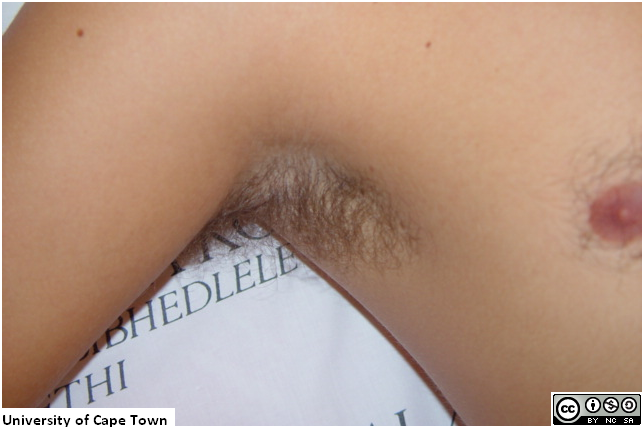
You must examine the axilla carefully and deliberately, specifically moving your hand to enable you to feel the following four areas within the axilla. Watch carefully where the pointers end:
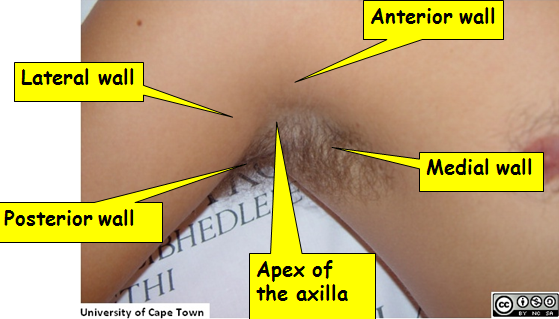
Palpate the apex of the axilla (as high as your fingers can go)...
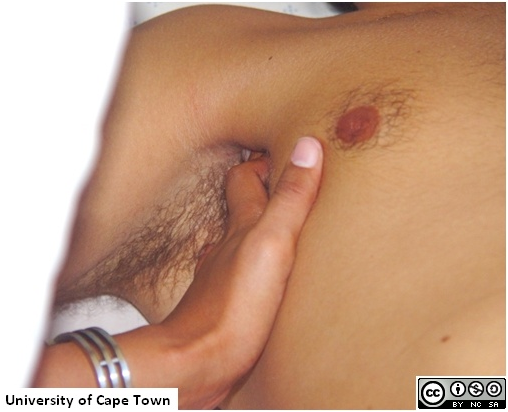
Then the anterior wall (the edge of the pectoralis muscles)...
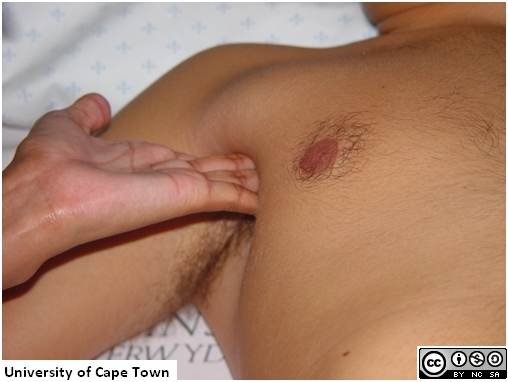
(Note how the hand is turned so that the sensitive fingertips can be used to feel for nodes.)
Then the posterior wall (the anterior surface of the latissimus dorsi and back muscles)...
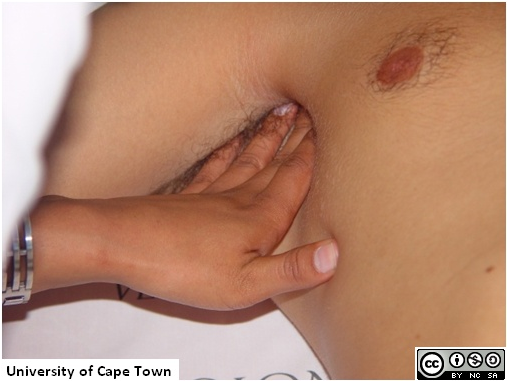
And finally the medial wall (the lateral ribcage).
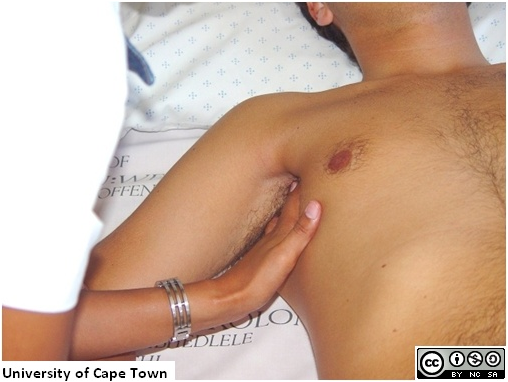
Use your left hand for the patient?s right axilla
And your right hand for the patient?s left axilla.
